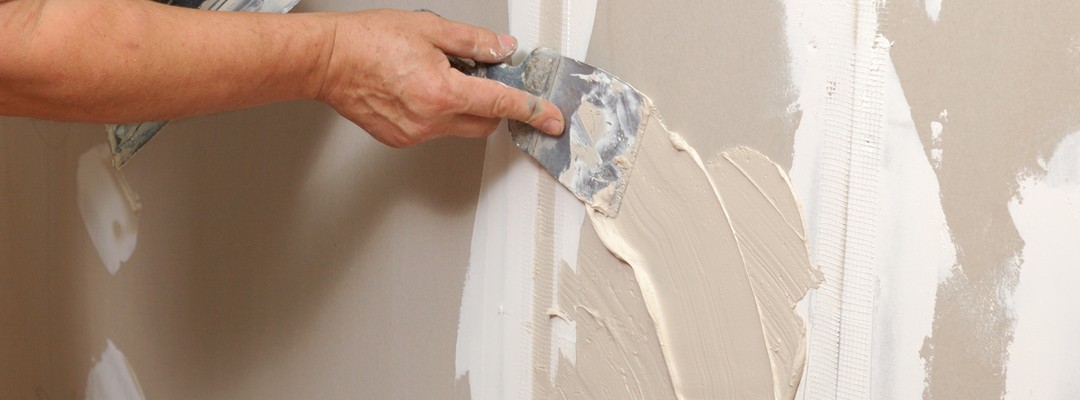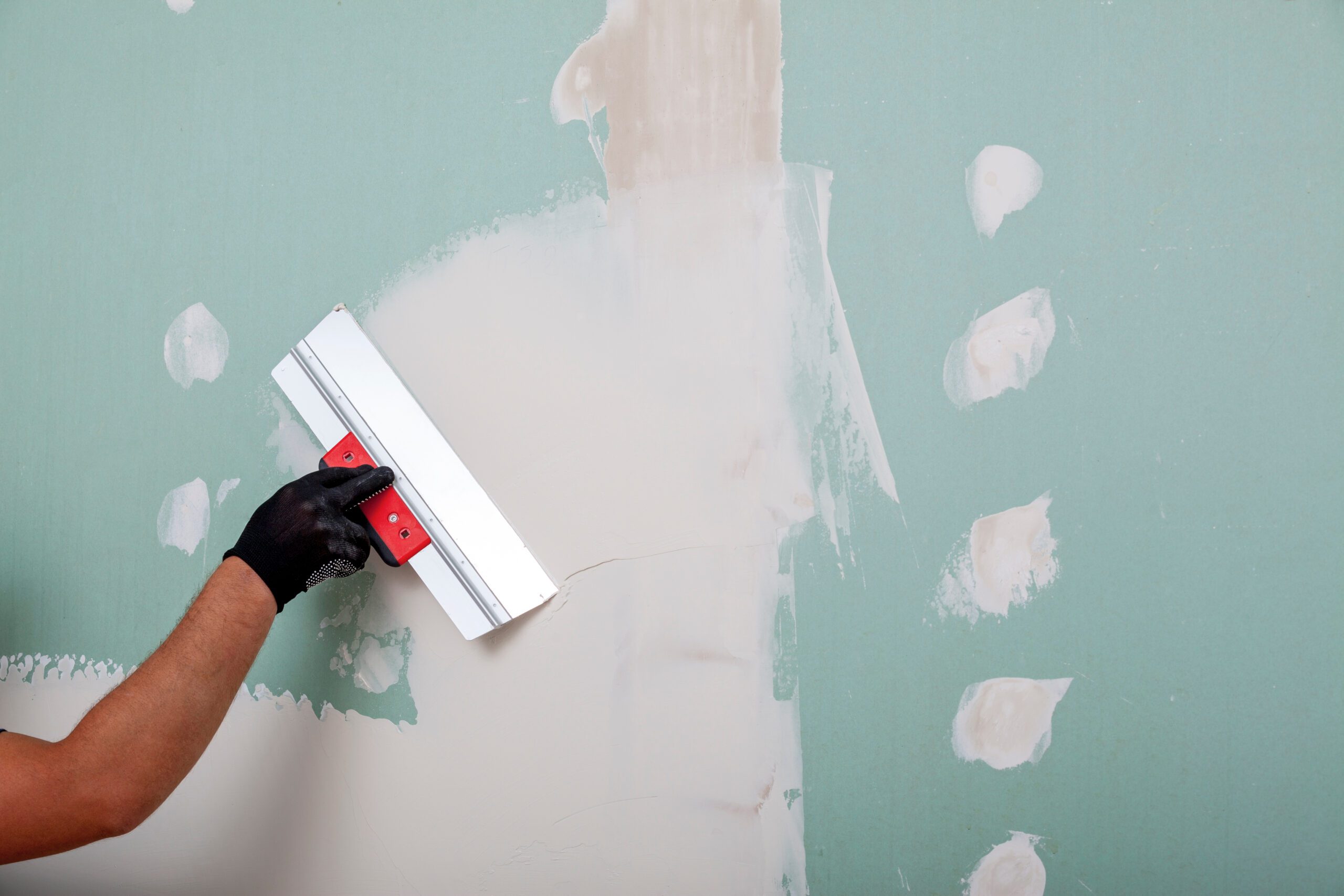Discover top-quality finishes from expert drywall contractors in combination with Interior Painting.
Important Tips for Effective Drywall Fixing and Installment Techniques
Effective drywall fixing and installment needs a careful method. Recognizing the kinds of drywall and having the right tools is vital. Precise measurements and proper strategies can significantly impact the outcome. Several neglect necessary actions like taping and sanding, which can make or damage the last appearance. As tasks advance, typical obstacles may arise that require focus. Exploring these tips can cause an extra polished and successful surface.
Recognizing Various Kinds Of Drywall
Understanding the different kinds of drywall is essential for any kind of effective repair or setup task. Drywall, frequently understood as gypsum board, comes in numerous varieties customized for details applications. Criterion drywall is one of the most commonly used type, suitable for general indoor walls and ceilings. Moisture-resistant drywall, usually environment-friendly in color, is made for areas vulnerable to moisture, such as washrooms and kitchen areas. Fireproof drywall, generally colored pink or purple, is crafted to stand up to higher temperatures and is frequently used in garages or near heating systems. In addition, soundproof drywall aids minimize noise transmission, making it appropriate for multi-family homes or videotaping studios. Specialty drywall, like cement board, is utilized in damp locations like showers or bathtub borders. Understanding these types assists in choosing the best product for each and every task, guaranteeing durability and effectiveness out of commission or new setups.
Essential Tools for Drywall Repair Work and Installation
Having the right tools is vital for efficient drywall fixing and installment. A high quality utility knife is essential for reducing drywall sheets precisely. A drywall T-square helps guarantee straight sides, while a taping knife is necessary for using joint compound efficiently over seams. In addition, a drywall saw enables eliminating damaged areas or suitable drywall around fixtures.
For hanging drywall, a power drill with drywall screws is indispensable, as it makes it possible for quick and secure installment. A degree is additionally important to confirm that the drywall is straight and correctly lined up. Once it has actually dried, a fining sand block or post sander is important for smoothing out joint substance. Finally, a determining tape is crucial for precise dimensions, avoiding waste and making certain an appropriate fit. Geared up with these devices, individuals can deal with drywall tasks efficiently, leading to professional-looking outcomes.
Step-by-Step Overview to Fixing Holes and Cracks
When addressing openings and fractures in drywall, having the right tools and materials is vital for an effective repair. This guide describes the needed things and provides a clear, detailed procedure to effectively recover the surface. Comprehending these aspects will certainly assist assure a seamless coating and lasting outcomes.
Devices and Products Needed
A well-appointed toolkit is crucial for efficient drywall repair service and setup. Trick devices include an utility knife for reducing drywall, a tape action to assure accurate sizing, and a drywall saw for larger holes. A putty knife is necessary for applying joint compound smoothly, while a sanding block or post sander aids attain a smooth finish. For patching, a roll of fiberglass harmonize tape or paper tape is essential to enhance joints. In addition, a drill and screws are needed for protecting new drywall items. Vital products include joint compound, guide, and paint to complete the fixing. Having these devices and products on site here hand guarantees a smoother, much more efficient repair procedure, producing professional-looking results.
Fixing Refine Steps
Fixing holes and splits in drywall needs a systematic approach to guarantee a smooth coating. Initially, the location surrounding the damage needs to be cleaned up completely to get rid of dirt and debris. Next, for small cracks, a putty blade is made use of to use a joint compound evenly over the area. For bigger holes, a spot is necessary; the harmed area is reduced out, and a brand-new piece of drywall is fitted in place, protected with screws. Once the patch remains in placement, joint compound is put on blend the edges. After drying, fining sand the location smooth is necessary. The fixed surface area must be primed and painted to match the surrounding wall surface, guaranteeing a low-profile repair work.
Techniques for Putting Up Drywall Panels
Setting up drywall panels calls for mindful planning and precise execution to assure a specialist and smooth coating. It is necessary to measure the wall surface room precisely and cut the panels to fit, ensuring that they line up with the studs. Placing the panels horizontally is usually advised, as this can improve the architectural honesty and reduce the number of joints.
Using drywall screws, installers should secure the panels every 16 inches along the studs, ensuring a firm hold. It is essential to avoid overdriving the screws, which can damage the paper surface area. For edges and edges, making use official site of an energy blade enables tidy cuts and a tight fit.

Ending Up Touches: Insulation, Mudding, and Sanding
When the drywall panels are securely in place, the following crucial step involves the complements of taping, mudding, and sanding. Insulation is essential for creating a smooth change between panels and hiding joints. A top quality drywall tape, either paper or fiberglass harmonize, need to be used over the joints, ensuring it sticks properly to the mud that will certainly be used next.
Mudding, or applying joint compound, complies with the taping procedure. This substance loads spaces and ravel the surface area. An initial layer should be applied generously, feathering the sides to mix with the drywall. After the initial layer dries, succeeding layers may be needed for a flawless coating.
Sanding is required to achieve a smooth surface. A fine-grit sandpaper needs to be made use of to delicately ravel any blemishes. Care needs to be required to prevent over-sanding, which can damage the drywall - drywall contractor. Correctly executed, these completing touches produce a specialist look prepared for paint
Tips for Maintaining Your Drywall After Installment
Keeping drywall after setup is important to maintaining its look and structural stability. Normal cleansing is required; dirt and dust can collect, so mild wiping with a damp fabric is advised. Home owners ought to additionally evaluate for any kind of signs of moisture or mold and mildew, particularly in high-humidity areas like cooking areas and bathrooms. If any kind of damage takes place, it's essential to address it promptly to avoid additional issues.
Making use of furnishings pads can assist prevent scrapes or dents from hefty home products. Additionally, painting the drywall with a top notch, cleanable paint gives an added layer of defense and makes future cleaning simpler. Avoid using abrasive cleansers or tools, as these can damage the surface. Maintaining a stable indoor environment with ideal moisture levels will certainly aid avoid breaking or warping over time. By following these tips, one can guarantee that drywall stays in exceptional condition for many years to come.
Frequently Asked Concerns
Just How Long Does Drywall Take to Fully Dry After Setup?

Can I Set Up Drywall Over Existing Drywall?
Yes, drywall can be mounted over existing drywall, but it is vital to assure the underlying surface area is secure and adequately prepared. This technique can boost insulation and decrease setup time, though it might include weight.
What Is the most effective Method to Soundproof Drywall?
The very best way to soundproof drywall includes utilizing specialized soundproofing materials, such as resilient networks, acoustic caulk, and sound-dampening drywall. These methods efficiently decrease sound transmission between areas, improving general acoustic performance in living rooms.
Just how Do I Choose the Right Drywall Thickness?
To select the appropriate drywall density, consider the application and location. Standard domestic walls usually use 1/2 inch, while ceilings or specialized locations may require 5/8 inch for added toughness and soundproofing capacities.
Are There Eco-Friendly Drywall Options Available?
Yes, green drywall options are available. These consist of products made from recycled materials, gypsum boards with reduced unpredictable natural compounds (VOCs), and those making use of sustainable production processes, supplying environmentally-conscious options for construction and improvement jobs.
Having the right tools is necessary for efficient drywall repair and installation. For hanging drywall, a power drill with drywall screws is essential, as it enables safe and secure and fast setup. Key tools consist of an utility blade for reducing drywall, a tape measure to ensure exact sizing, and a drywall saw for bigger openings. Yes, drywall can be installed over existing drywall, however it is necessary to assure the underlying surface is safe and effectively prepared. The ideal method to soundproof drywall includes utilizing specialized soundproofing products, such as resilient networks, acoustic caulk, and sound-dampening drywall.